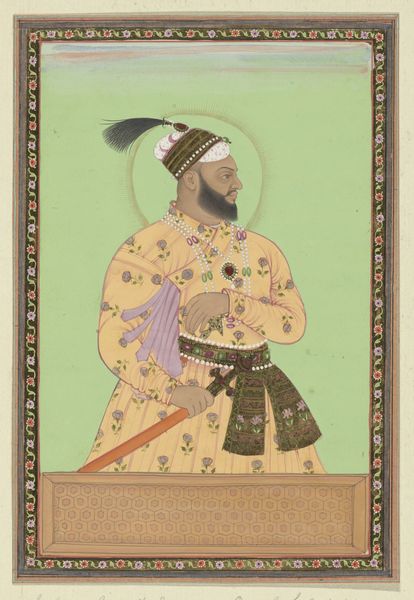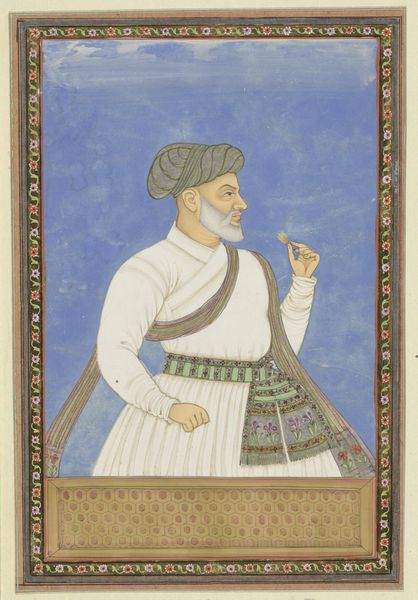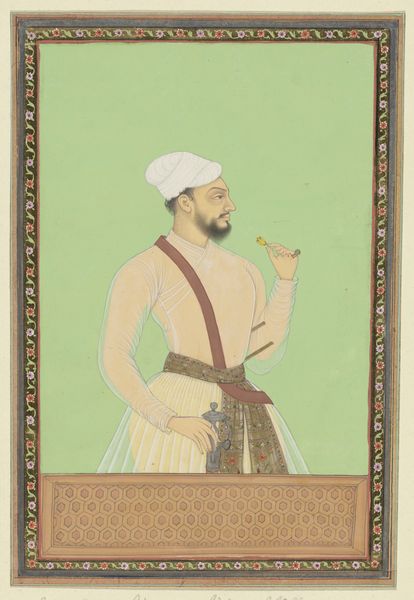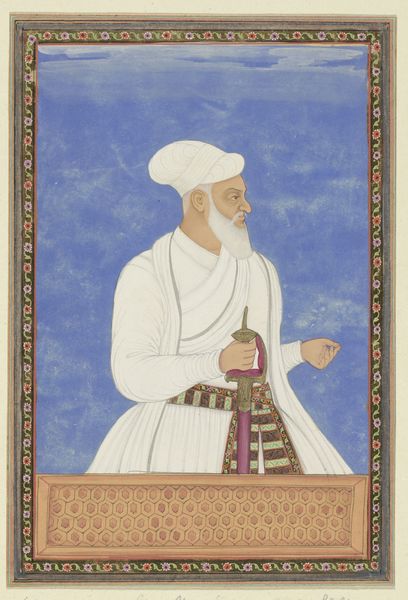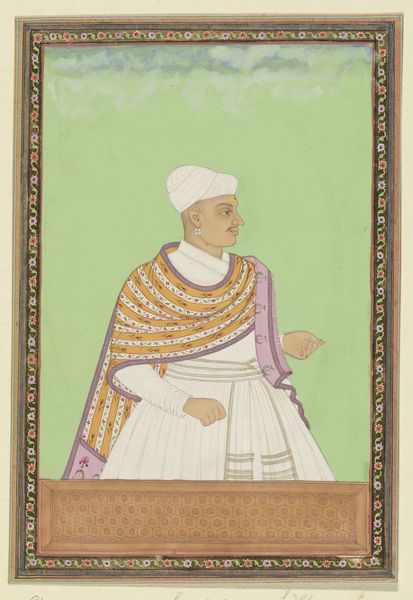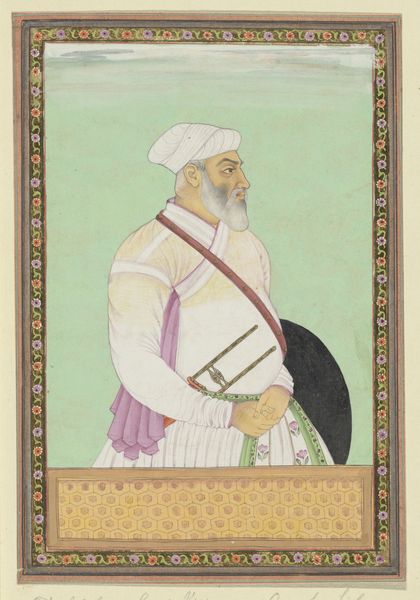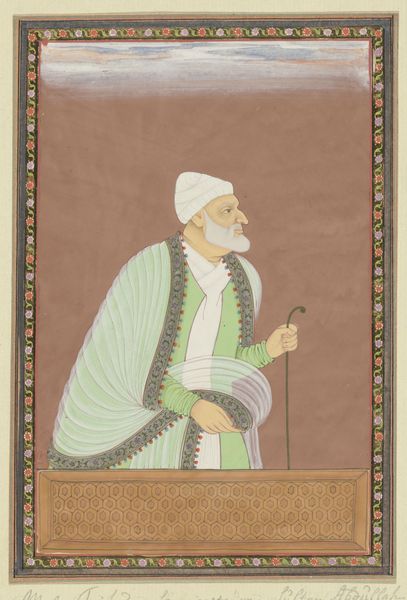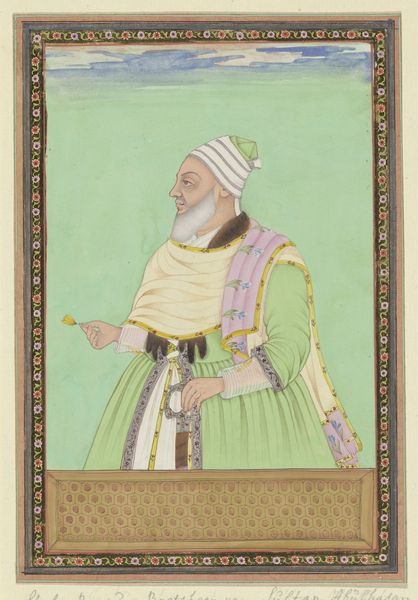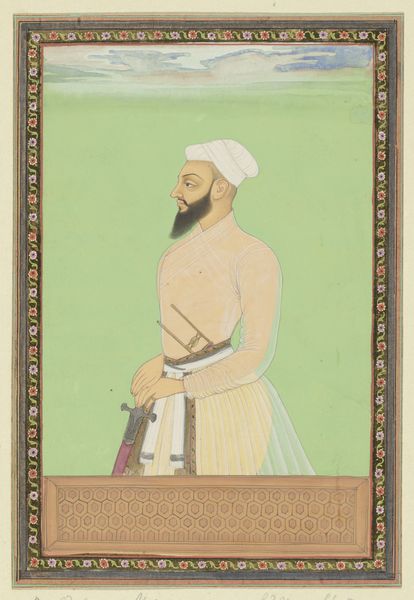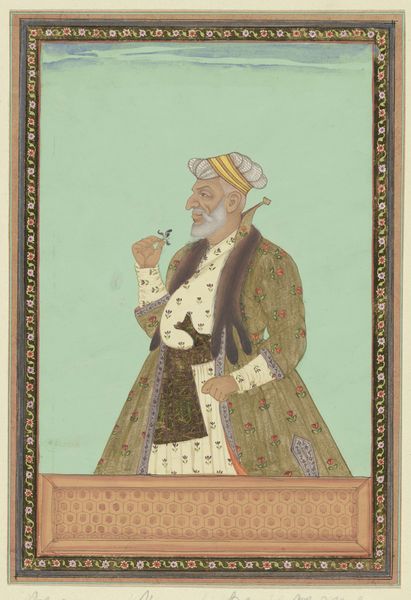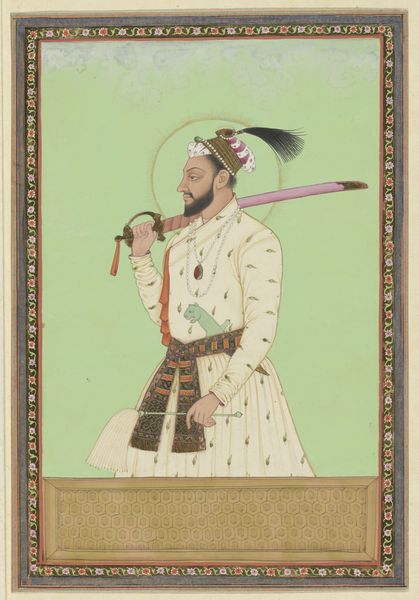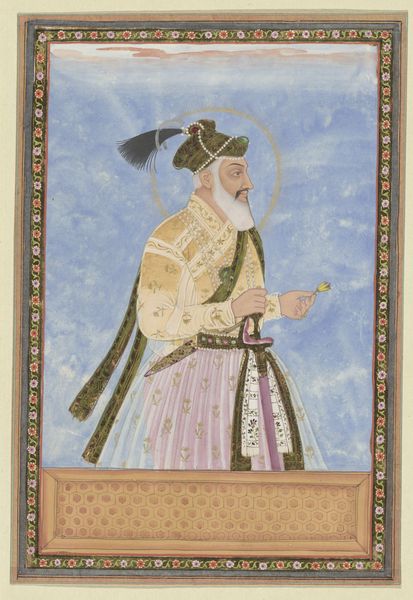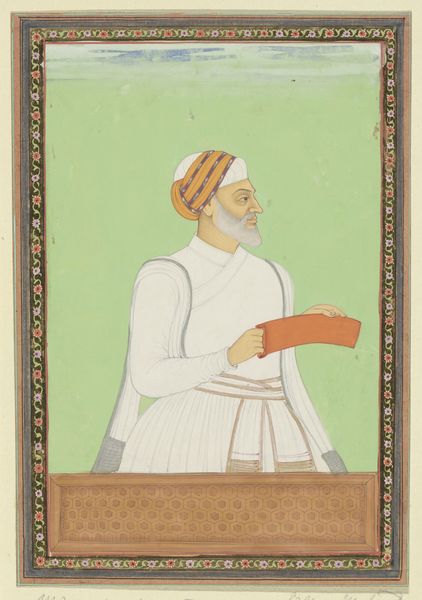
Portret van Aurangzeb, jongste zoon van Shah Jahan, die in de tijd van zijn vader regeerde over de provincie Deccan, en na de dood van zijn vader over geheel Delhi regeert nadat hij alle drie zijn broers heeft gedood. c. 1686
0:00
0:00
anonymous
Rijksmuseum
painting, watercolor
#
portrait
#
painting
#
asian-art
#
figuration
#
watercolor
#
islamic-art
#
watercolour illustration
#
history-painting
#
miniature
#
realism
Dimensions: height 203 mm, width 140 mm
Copyright: Rijks Museum: Open Domain
Curator: Welcome. Let's examine this arresting portrait, created circa 1686 by an anonymous artist, housed here at the Rijksmuseum. The piece, rendered in watercolor, depicts Aurangzeb, the youngest son of Shah Jahan. Editor: It's deceptively serene, isn't it? The soft colors and the delicate floral border give it a courtly feel, yet his eyes…there's a hint of something calculating. Curator: That duality is key to understanding Aurangzeb’s complex legacy. Here we see the future emperor, then a provincial governor, a man who would later seize power through fratricide. How might we interpret the sword he carries as well as the blossom he delicately holds? Editor: The sword represents his military might, of course, a symbol of power and authority in that era. But it’s the flower that’s most striking. It's a symbol of grace, of beauty, but perhaps it's also a fleeting thing, easily crushed – much like his rivals. It can serve as a memento mori that underscores his future reign as a continuous campaign to impose order. Curator: Precisely. Consider the stark white of his robes against the pale green backdrop. White traditionally signifies purity, but here it might cloak ambition, a calculated move in a court rife with political intrigue. He styled himself as a pious reformer after his bloody accession, keen on eliminating the perceived decadence of his predecessors. The symbolic contrast of pure intention with cruel realities speaks to his place in history. Editor: And note the halo! Typically, we associate that sort of aureole with divinity, but its presence around Aurangzeb's head adds a layer of complexity, perhaps even a touch of irony, knowing the turmoil and strict Islamic law he brought to India. Was it wishful propaganda? A subtle challenge to the perceived legitimacy of the new, Islamic, regime? Curator: It's a challenge, isn't it? An invitation to consider power, piety, and portraiture as intrinsically linked in shaping and solidifying a ruler's narrative, which is crucial to unpacking Aurangzeb's identity within a wider sociopolitical narrative. The portrait freezes the image, allowing us a timeless perspective on the making of Aurangzeb’s legacy. Editor: Agreed. A fascinating glimpse into the construction of power, rendered in exquisite miniature.
Comments
No comments
Be the first to comment and join the conversation on the ultimate creative platform.
